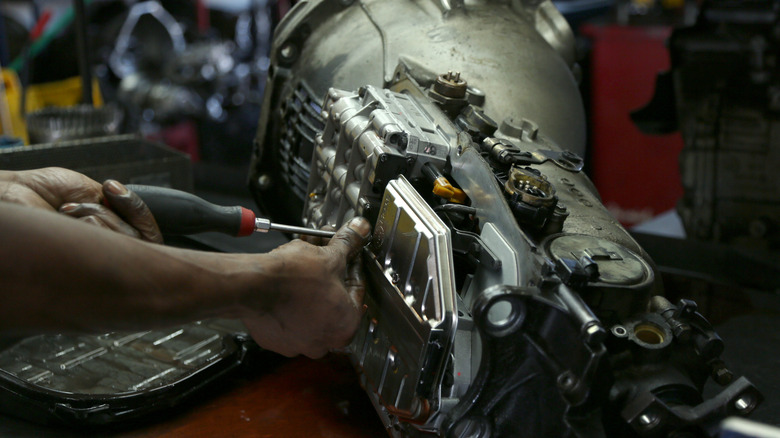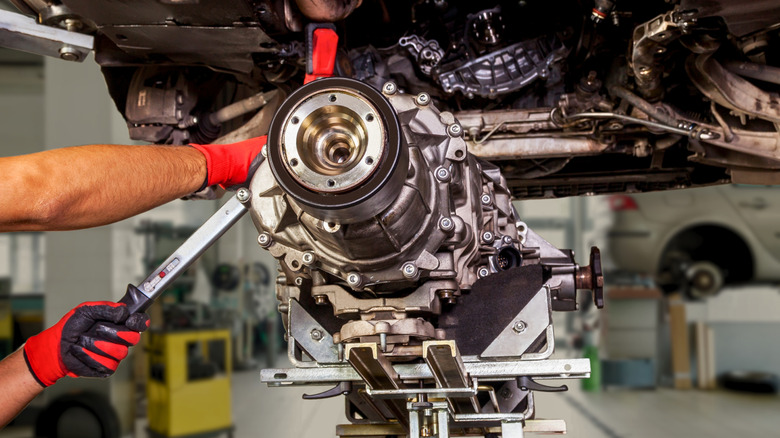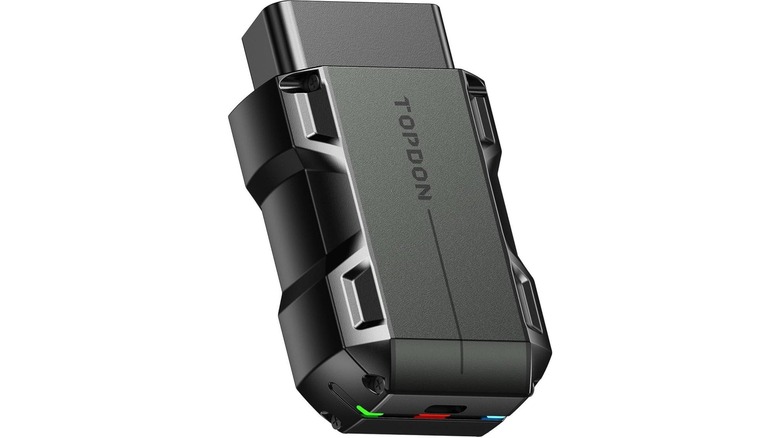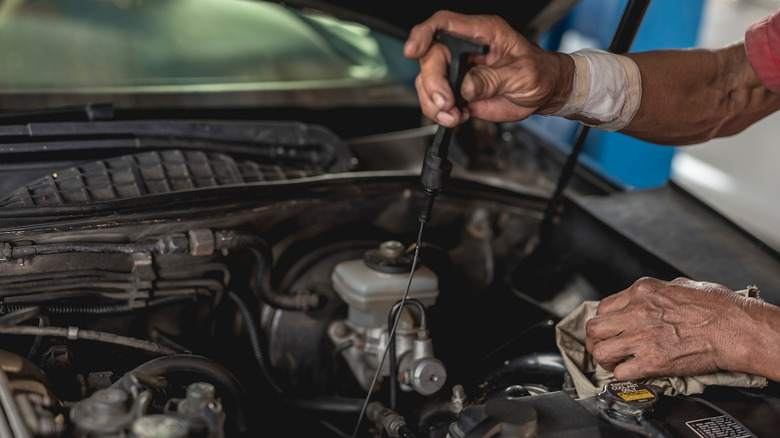How To Check The Transmission Fluid On Your Car (With Or Without A Dipstick)
So you're all scared about the condition of your transmission, whether or not you've properly filled it with whatever fluid it's so thirsty for. Unfortunately for you, your car's manufacturer hates you, which means your transmission doesn't have anything so convenient as a dipstick and you're stuck — right? Well, not quite. Depending on the makeup of your car, you may have some options. All is not lost.
Modern cars are doing their best to omit dipsticks wherever possible, making life inconvenient for those of us interested in saving money by doing our own maintenance. But even carmakers' own dealerships need ways to check fluid levels, and we can use some of their tricks in our home garages and driveways. We may not have their fancy oil vacuums or pro-tier OEM-supplied diagnostic equipment, but we can approximate their methods with less expensive tools that are easier to get your hands on.
General guidelines
When checking your car's transmission fluid level, always get your engine and gearbox oil warm first. They don't need to be hot — don't burn yourself! — but warm enough that the oil's viscosity starts to drop. You want to be measuring the level of a liquid, not a sludge, because one of those is going to give a much more accurate reading than the other. Remember too that while idling a parked car does heat the transmission, it won't always do so evenly. Moving your car around, shifting through the gears, can ensure heat is properly spread throughout the gearbox.
The other crucial thing to take into account is the angle of your car. When checking fluid levels, you always want your car to be on the flattest spot of ground you can find. It's probably not worth busting out the level, but a flat garage is going to give you a more accurate reading than a sloped driveway.
Check for holes
Does your transmission have holes in it? Sometimes you're not supposed to have those — generally if they're leaking, jagged, or were recently made by a sharp rock or jilted ex — but some holes are intentional. Fill holes and drain holes are supposed to be there, and some manufacturers will build the fill hole at precisely the right level to fill your transmission to. Add transmission fluid to the hole until it leaks, and once it stops leaking out you know it's perfectly full.
This is how the ever-popular ZF 8HP works, as shown in the video above, and also how the Aisin AZ6 in my old Scion FR-S told you it was full. It's not the cleanest method for checking whether your transmission is full — it involves crawling under your car and letting oil leak out of it — but it's hard to beat the reliability of a hole.
Ask the computer
Modern cars are chock full of sensors, and for some that includes an oil level sensor. Some will only tell you whether oil is "low" or "not low," but others can actually give granular — if sometimes unhelpful — data. Whether binary or more detailed, though, that information is being sent to your car's computer and can usually be read through its OBD port in the footwell.
Tempted though you may be by shiny dedicated OBD scanners, it's usually more convenient and cost effective to get a wireless model that lives in its port forever. Bluetooth, wi-fi, anything that connects to a free app on your phone ought to do the job well enough to know when you should top off your gearbox. Those little dongles do tend to stay in your car forever, though: I have never once remembered to pull one out before selling the car I bought it for. You just forget they're there.
Just buy a dipstick
Some cars exist in the middle ground between vintage user-repairability and modern high-tech (often-German) stalwart refusal to tell you a single mechanical fact about the vehicle you paid good money for. These cars may lack a dipstick for the transmission, but they may still have a tube running down to the gearbox — exactly the spot that would have a dipstick, had the manufacturer seen fit to include one. Auto parts stores carry third-party dipsticks for those models, and that's the easiest tutorial of all: Use it the way you would any other dipstick.
It's always good to check your owner's manual before checking your transmission fluid, and that goes doubly so if you don't have a simple dipstick to use. You may need torque specs for bolts, or you may even have a dipstick hidden somewhere just out of sight — somewhere you'd never see it unless you actually read the manual. Give that one a shot first. It's a more interesting read than you might think.



